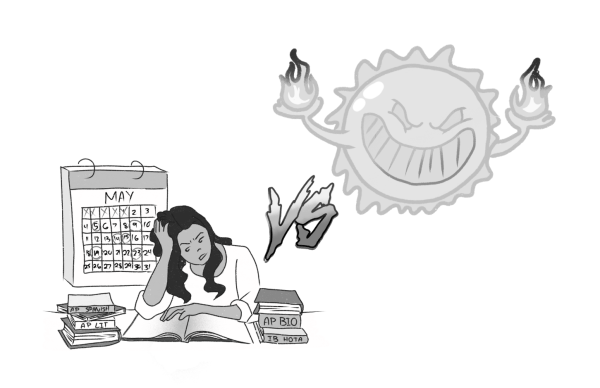The SAT’s Curve Creates Confusion
In June of 2018, there was an uproar from students receiving their scores for the SAT, because they believed that they were being cheated by the College Board out of the scores they thought they deserved. They felt that since they got the same number of questions correct as they did earlier in the year, that their score should be the same. However, their scores were lower. In recent SATs, the College Board has administered a noticeably easier test than in previous sessions (because of the testing of more practical vocabulary and math skills). The easier SAT versions have multiple ramifications; one effect of the less difficult SAT is that the College Board uses the complicated process of equating to make the scores for each SAT comparable to the others.
Through using the process of equating, the same scores (the amount of questions answered correctly) from multiple tests could generate different scaled scores (the final score out of 1600). The aforementioned phenomenon is what frustrated many students after a heavily equated test in June. Since easier tests make it easier to get more questions right, wrong answers are given more weight. For example, if someone took the SAT in May of 2018 and got three questions wrong on the math section, then they got three questions wrong again in June, their score in June would be lower than their score in May because the June SAT was easier, resulting in more “harsh” conversions of raw scores to scaled scores by the College Board. Because tests are becoming easier, more weight is being given to wrong answers.
“Now that [the SAT] is easier, I think it is fair that the wrong answers you get sort of hurt you more, even though you’re not getting points taken off,” CHS sophomore Zack Kreines said. “If the test is easier, then you should be getting higher raw scores overall, and that means that the score out of 1600 needs to be adjusted to fit that.”
The fact that more weight is being given to wrong answers means that if a high schooler knows the material well on two tests, one easier and one harder, but makes a silly mistake on both, their scaled score out of 1600 would be lower on the easier test because they would have to get more correct answers (a higher raw score) to obtain an identical scaled score. The fact that simple mistakes are made more harmful on easier versions of the test is an unfortunate repercussion of the equating system, and being penalized more for a mistake like bubbling in the wrong answer choice forces high scorers to be more vigilant while test-taking.
Another effect of the equating system is that as students scores increase, their math scores are more subject to variation. When college admissions officers look at a set of test scores they see slight variation in scores as a difference in math ability, which it could be, but with the equating process, oftentimes a careless mistake in math can lead to a noticeably worse score. Taking into account the results of the equating system, Junior Roark Chao admits that it does have negative consequences, and as high scorers on standardized tests, Chao and Kreines, aware of the harm the system could do to their scores, see the reasoning behind equating on the SAT.
“I think that what they’re doing now is not necessarily the best tactic, but it’s definitely not the worst,” Chao said.
It can be said that many see the logic and purpose of the equating system, although it does have some flaws which result in indirectly negative consequences. Wrong answers result in a greater penalty on the score out of 1600 on easier versions of the test, causing an increase in difficulty to get higher scores. Lastly, the fact that colleges do not look at the curve of each test means that they may wrongly distinguish between two different scores from SATs varying in difficulty.
Hello there! Our goal is to provide relavent, engaging journalism for readers of all ages. Your donation will support the student journalists of the Wolfpacket at Claremont High School, and will allow us to purchase equipment, print our monthly issues, and enter in journalism competitions. We appreciate your consideration!

A senior in his third year on the Wolfpacket staff, Rowan Orlijan-Rhyne, occasionally referred to as Rowan “Orange Rind” by his Wolfpacket peers, strives...






